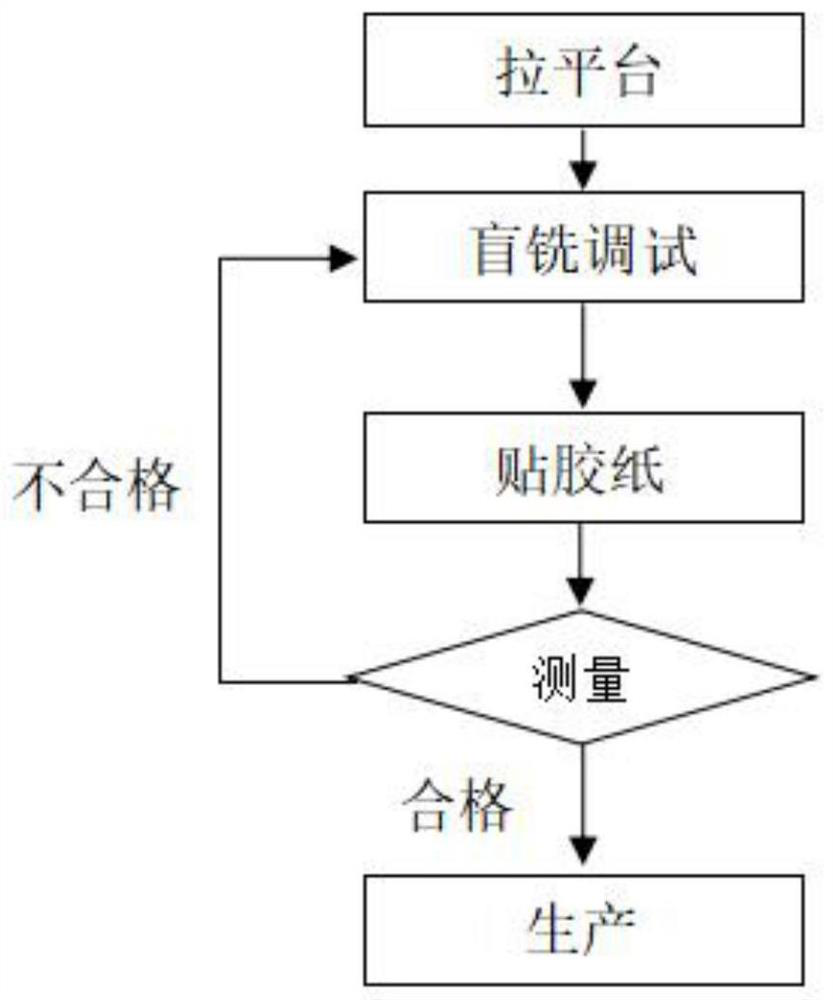A method and device for multi-axis collaborative blind milling of printed circuit boards
A technology for printed circuit boards and circuit boards, which is used in milling machine equipment, manufacturing tools, and comprehensive factory control. Positioning speed and paste speed, low cost, and the effect of improving efficiency
- Summary
- Abstract
- Description
- Claims
- Application Information
AI Technical Summary
Problems solved by technology
Method used
Image
Examples
Embodiment Construction
[0044] Wherein, the upper surface of the backing plate 5 can be flattened to form a groove shape, so that the circuit board is fixed on the bottom surface of the groove;
[0055] Mass production: the milling machine that has completed the measurement correction is used for the blind milling batch processing of the circuit board.
[0057] As a preferred embodiment of the above method, the thickness of the adhesive tape is 0.1mm.
[0058] As a preferred embodiment of the above method, the backing board 5 is a medium density wood fiber backing board.
[0062] Wherein, the upper end of the sleeve 703 is provided with a connecting seat 701, and the connecting seat 701 is connected with the connecting plate 903 by bolts;
[0063] Wherein, the telescopic mechanism 702 can be an electric push rod or an air cylinder or an oil cylinder;
[0064] Wherein, the two sides of the sleeve 703 are provided with a connecting rod 704, the connecting rod 704 is provided with a rotating shaft 705, and o...
PUM
 Login to View More
Login to View More Abstract
Description
Claims
Application Information
 Login to View More
Login to View More - R&D Engineer
- R&D Manager
- IP Professional
- Industry Leading Data Capabilities
- Powerful AI technology
- Patent DNA Extraction
Browse by: Latest US Patents, China's latest patents, Technical Efficacy Thesaurus, Application Domain, Technology Topic, Popular Technical Reports.
© 2024 PatSnap. All rights reserved.Legal|Privacy policy|Modern Slavery Act Transparency Statement|Sitemap|About US| Contact US: help@patsnap.com










